Help with ccASHP model for CZ7A. Mitsubishi Zuba PUZ/SUZ or Tosot Apex?
We’re doing a deep energy retrofit/rebuild of an older home in CZ7a (design temperature of -26c/-15f). Home is a bungalow – 1400ft2 on the main and 1300ft2 in the basement, with upgraded insulation to ~R40 and triple glazed windows.
The HVAC system will be a centrally ducted system reusing much of the existing duct work. The calculated heat load is around 18,000-20,000BTU/h at the design temperature – 18,000 with ACH50 of 1 and 20,000 with ACH50 of 2.5, so we are aiming for the 18,000BTH/h figure. The current furnace is a 60,000 BTU mid efficiency gas unit which will be removed and replaced with the heat pump and backup resistive heat.
We have spoken to our builders HVAC installer and unfortunately he doesn’t have a huge amount of experience installing ccASHP so it’s fallen to us to help with the equipment specifications.
He has installed Tosot Apex units before (rebranded Gree Flexx units according to a poster on here) and we are looking at them as an option – the HVAC installer says they are a lot cheaper than Mitsubishi Zuba units and may perform slightly better at colder temps (rated to 78% capacity at -30c).
The Tosot Apex unit would be a TUD24-36AADU with a rated capacity of 24,000BTU/h and output of 22,000BTU/h at -26c (see attached), so a little over capacity for what we need, but 24k is the smallest option.
We’re getting stuck on the Mitsubishi Zuba Central units. The primary question is whether the PUZ or the SUZ range are a better choice for our usage scenario. Once that decision is made, from what I can tell we should be looking at either an 18k BTU/h model or a 24k BTU/h model. Unfortunately most of the information available only goes down to -15c/5f so it’s difficult to see which would best fit at our design temperature. I’m assuming the 18k unit will be a bit undersized, and the 24k unit may be about right…?
We’re not too worried about cooling as we don’t currently have an A/C unit (summers rarely get above 25c) and the unit will primarily be used for heating.
Any help or recommendations on this would be much appreciated.
GBA Detail Library
A collection of one thousand construction details organized by climate and house part
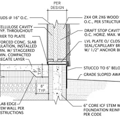
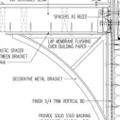
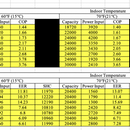

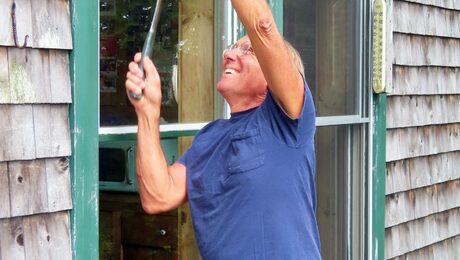


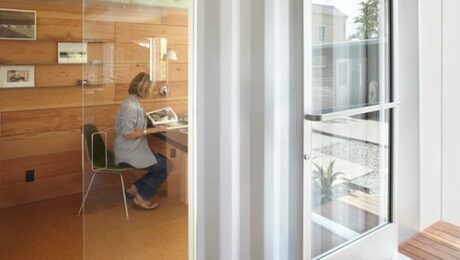
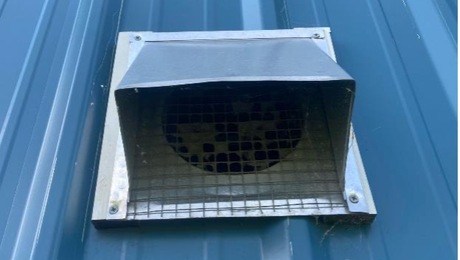
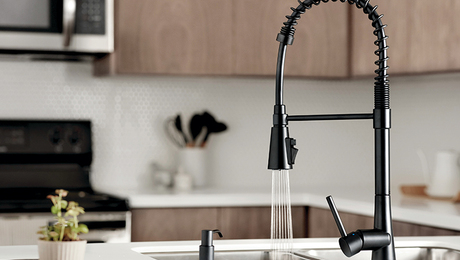
Replies
I don't have any answers for you, but have you seen this series of articles by Jon?
https://www.greenbuildingadvisor.com/article/191335
Have you done anything to verify that your existing ductwork is adequate for a mini split?
Hi, thanks, yes I have read through that series. It's definitely useful.
We've decided to go with a Tosot unit. Now it's a case of debating with the HVAC installer as to what should be installed.
He's recently sent me the submittal for the APEX 36k unit TU36-24WADU (outdoor) and TUD36-24AH2ADU (indoor). He's arguing that's the one we need and as it's a modular system it'll be fine. From the submittal it claims a min rated capacity of 18,000BTU and max capacity of 38,000BTU, which to me seems WAY too high for a house with a design load off 18,000BTU at -16f (-25c). It seems to be one of the few models NEEP actually have data for below 5f (https://ashp.neep.org/#!/product/34231/-16/18000/MT/727770/1) but it shows it having a greater turn down ability (down to 9,800BTU) than the submittal. According to NEEP it'll have 90% annual low load cycling, which seems bad? From my understanding that may significantly reduce efficiency and increase running costs, as well as reduce comfort in the home?
Tosot do a 24k BTU unit (mentioned in the first post) but their public information is a bit patchy. It looks like it may be the same exterior unit, but a slightly different interior unit. Both appear to have the same capacity at design temp (~18kBTU), but the 24k looks capped at 24k BTU.
He also sent some information about backup resistive heating. The smallest one they do is an 8kW system, but he's recommending a 10 or 15kW (50k BTU?) system instead. Am I right in thinking both those are WAY overkill for an 18k BTU home.
The problem with the dual range units is that it is still a 36k output compressor even when set to 24k. At the lower setpoint efficiency is better but minimum output is the same, something with decent turndown at 36k starts looking not so great capped at 24k.
If you are looking for detailed info on the Mitsubishi units take a look at:
https://mylinkdrive.com/USA/M_Series/R410A_Systems-1/Outdoor_Equipment/R410A_Outdoor
The engineering manual will have output data including modulation range down to -13F. The P series do go a bit lower but tend to be more expensive. I think you are better off with the M series with a strip heater sized to carry your place in case it cuts out during a cold snap.
You do want to get the sizing correct, cycling on a heat pump does kill efficiency. I have run into this with a heat pump with low turndown. When it is running within its modulation range, energy use tracks outdoor temperature. Once weather warms up and the unit starts cycling, the energy use flattens out even as the outdoor temperature rises. 90% cycling is not a good start.
Thanks, extremely useful. The "smaller" Tosot unit does appear to have a lower modulating output, but elsewhere it shows it as being the same as the 36k BTU system. In fact that seems to be a common theme in what I'm seeing for those units. Different submittals and brochures seem to have different specs. I have no idea what some of the key performance data is now.
I spent the afternoon looking at the Mitsu options and finally got my head round the nomenclature. Based on both NEEP and submittals it looks like there's not much in the shutoff temperature between both the M and P hyper heat units (-22f generally). Using NEEP as a guide it looks like the SUZ-KA18NAHZ may be the best fit. It's slightly undersized at the design point but has the lowest load cycling percentage.
https://ashp.neep.org/#!/product/31992/-16/18000/MT/727770/1
Oddly the 24k unit is not energy Star certified and seems to a much lower HSPF rating.
I'll run it by our HVAC contractor and see what he says...
I was looking at exactly that outdoor unit (the Mitsubishi 24K hyperheat.) It's numbers are indeed just outside the range for our new tax credits, so I had to reconfigure and downsize to the 18K. Slightly cheaper equipment, better numbers, and $2,000 from the feds! (Although I think you're in Canada, different incentives.) Funny how non-technical factors can play such an outsize role in our choices.
The 18k can work but seems a bit too small, the heat loss covered by the strip heat in a year is not that much so it should be fine. I think something in the 2 ton range is a better option.
I would check if your contractor can get Samsung,LG, Midea/Carrier or Gree/GE units. They have similar offerings and at least the Midea/Carrier units go down to -22f with very good output. Samsung seems to have some pretty good performance as well.
Tosot is a sub brand of Gree and the unit looks like a rebranded Gree GUD36W/A-D(U) / FLEXX36HP230V1AO. It has the same performance data on NEEP, same minimum capacity threshold around 0f.
https://ashp.neep.org/#!/product/67760/-16/18000/MT/727770/1
I also looked at the Mitsu P and M series 24k units and they have very similar output to the 18k option (maybe why they aren't E* rated?). The 30k SUZ-KA30NAHZ was another option. It should cover all our heating needs and then some, but the minimum capacity threshold is 23f.
https://ashp.neep.org/#!/product/34582/-16/18000/MT/727770/1
Maybe I'm worrying too much about the cycling at higher temperatures? Or is this what appears to be the age old question of whether to undersize and use more resistive heat at the low end to reduce energy use at the high end?
The contractor usually installs Trane (so the Mitsubishi options will be the Trane co branded ones) and has installed a few Tosot products in the past. I will look in to the other brands you mentioned. Thanks.
I'm wondering if anyone can provide the temperature/output data for the Mitsubishi SUZ-KA18NAHZ-TH and SVZ-KP18NA combo?
I'm seeing some mixed information about the low end of the temperature range. I'm seeing a capacity of 9,288BTU at -13f, however capacity at -4f (15,552BTU) doesn't match the maximum capacity (21,600BTU) in the brochure, which makes me wonder if the 9,288BTU number is rated rather than maximum. Is it right that output dies after -5f unlike the larger 24 and 30k units which are still at 80% capacity at -13f?
I'm using the spec data from mylinkdrive.com, but it doesn't have the detailed information I've seen for some Mitsubishi units on here.
Is there a reason the 6,12 and 18k BTU units are appended with -TH and not the larger 24k+ units? The 18k unit appears to have a lower shutoff temperature than the larger units (-25f), which seems odd considering it appears to be worse at those temperatures.
If the data for the PUZ-HA24NHA1/PVA-A24AA7 unit is available that would be great too.
For those looking at this unit in future:
It appears the low temperature output specs for the SUZ-KA18NAHZ were updated in March 2022 (Rev D). Older doucuments show much lower performance than the updated documentation.
Old: -13f - 9,692BTU/h output (40% of capacity)
New: -13f - 17,280BTU/h output (80% of capacity)
The new data matches the 80% output claim at -13f/-25c for the Hyperheat M Series units, and the larger units (24k+). Rated and minimum are still the same, which doesn't make sense to me as it means the COP at max is way higher than the COP at rated and minimum outputs (which are <1).
There's a lot of conflicting information online about the output, even the documents on mylinkdrive contradict each other (Databook (Rev D) shows one thing and the undated Engineering Manual shows the other).
If anyone with more knowledge of the Mitsubishi lineup could confirm this (or knows why it was changed) that would be great.